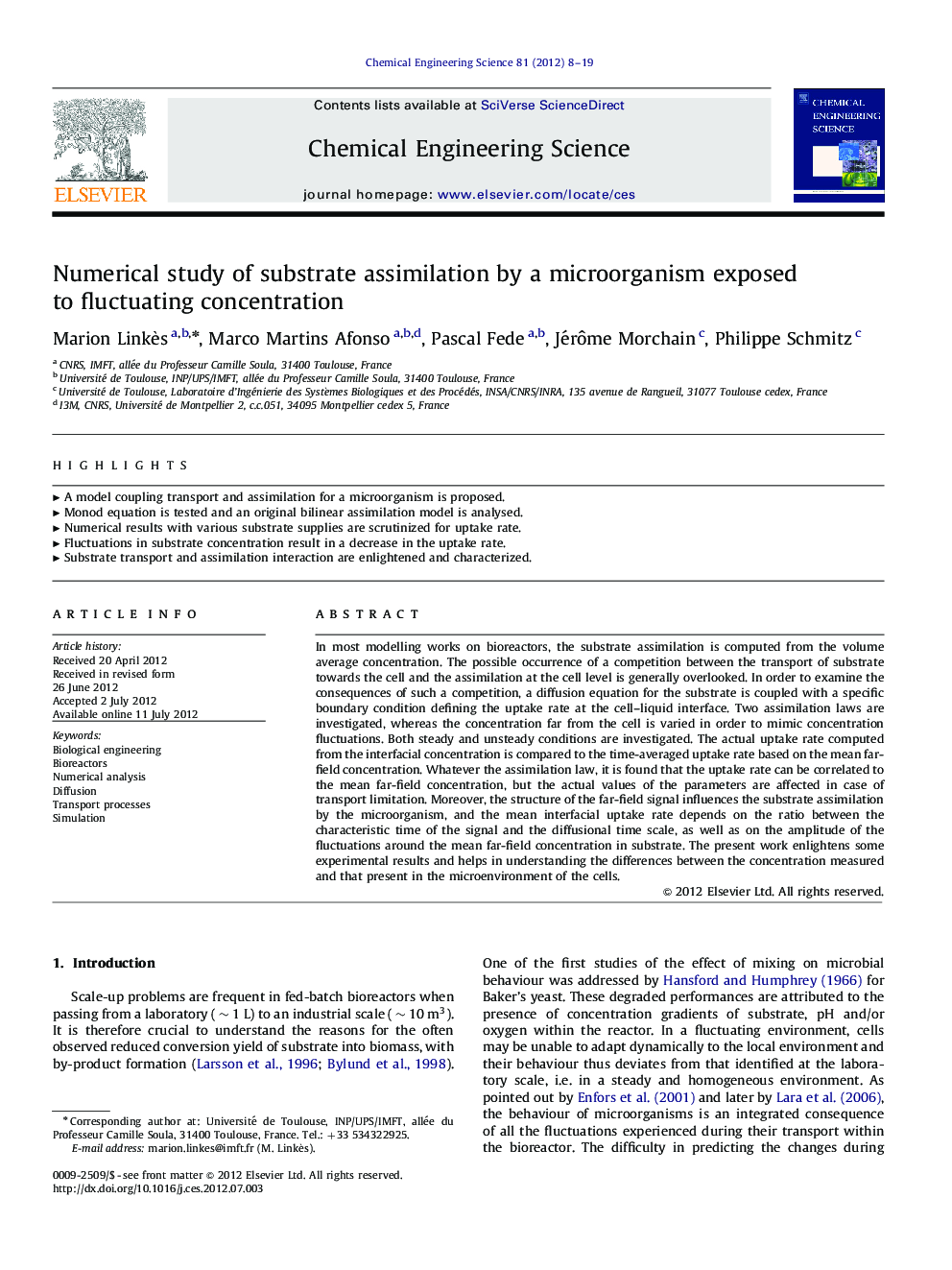| Article ID | Journal | Published Year | Pages | File Type |
|---|---|---|---|---|
| 155500 | Chemical Engineering Science | 2012 | 12 Pages |
In most modelling works on bioreactors, the substrate assimilation is computed from the volume average concentration. The possible occurrence of a competition between the transport of substrate towards the cell and the assimilation at the cell level is generally overlooked. In order to examine the consequences of such a competition, a diffusion equation for the substrate is coupled with a specific boundary condition defining the uptake rate at the cell–liquid interface. Two assimilation laws are investigated, whereas the concentration far from the cell is varied in order to mimic concentration fluctuations. Both steady and unsteady conditions are investigated. The actual uptake rate computed from the interfacial concentration is compared to the time-averaged uptake rate based on the mean far-field concentration. Whatever the assimilation law, it is found that the uptake rate can be correlated to the mean far-field concentration, but the actual values of the parameters are affected in case of transport limitation. Moreover, the structure of the far-field signal influences the substrate assimilation by the microorganism, and the mean interfacial uptake rate depends on the ratio between the characteristic time of the signal and the diffusional time scale, as well as on the amplitude of the fluctuations around the mean far-field concentration in substrate. The present work enlightens some experimental results and helps in understanding the differences between the concentration measured and that present in the microenvironment of the cells.
► A model coupling transport and assimilation for a microorganism is proposed. ► Monod equation is tested and an original bilinear assimilation model is analysed. ► Numerical results with various substrate supplies are scrutinized for uptake rate. ► Fluctuations in substrate concentration result in a decrease in the uptake rate. ► Substrate transport and assimilation interaction are enlightened and characterized.
